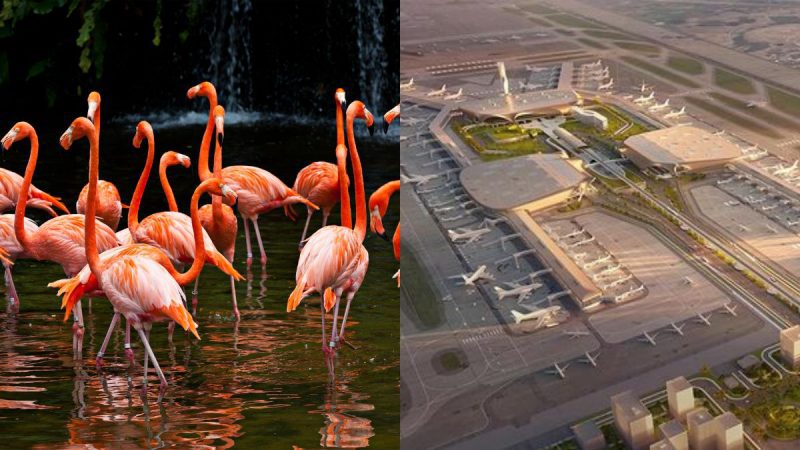A recent study by the Bombay Natural History Society (BNHS) has provided a reassuring conclusion: migratory flamingos and other birds pose no significant threat to the new Navi Mumbai International Airport (NMIA). The study, which was a part of the Half-Yearly Compliance Report of Environmental & CRZ Clearance for the NMIA project, has eased concerns about the potential risks posed by the bird habitats surrounding the airport.
Migratory Flamingos And Birds Not A Threat To Navi Mumbai Airport

The BNHS report examined the flight patterns of migratory birds, particularly flamingos, that frequent the Thane Creek Flamingo Sanctuary and various wetlands in the Navi Mumbai area. According to the study, these birds typically fly at altitudes much lower than those used by aircraft during takeoffs and landings at the airport. This finding is significant because it suggests that there is little risk of bird strikes, which are a major safety concern for aviation.
Navi Mumbai International Airport Limited (NMIAL) had previously expressed concerns about the proximity of certain bird habitats, including the NRI Colony, Training Ship Chanakya (TSC), and Delhi Public School (DPS), which are located close to the airport and fall within the Inner Horizontal Surfaces (IHS) of NMIA. These areas are known to attract large numbers of birds, particularly during the migration season. However, the BNHS study has shown that the flight paths of these birds are generally well below the altitudes at which aircraft operate, thereby mitigating the risk of bird strikes.
Wetlands And Forested Areas

Environmentalists, who had been concerned about the impact of the airport on the local ecology, have welcomed the findings of the BNHS report. The study’s conclusion that the wetlands in the Navi Mumbai area will not pose a significant risk to aviation safety means that these important habitats can be preserved.
The BNHS pilot study covered eleven sites based on their locations, habitat types, and the diversity and abundance of bird species. Eight of these sites were wetlands, including TSC, NRI Complex, DPS, Kharghar creek, Kalundre River, Sonari-Belpada, Dastan Phata Jasai, and Uran, while the remaining three were forested areas: Karnala Bird Sanctuary, Chinar, and Mosare.
Also Read: Swarm Of Bees Attacked Bareilly-Bound IndiGo Flight At Mumbai Airport; Flight Delayed
The study highlighted the importance of these wetlands for the conservation and management of bird populations, particularly in relation to the local movement of birds, which is influenced by tide height and water depth in high-tide roosting sites.
Cover Image Courtesy: Canva (Representative Image)
For more such snackable content, interesting discoveries and the latest updates on food, travel and experiences in your city, download the Curly Tales App. Download HERE. First Published: August 14, 2024 12:31 PM




